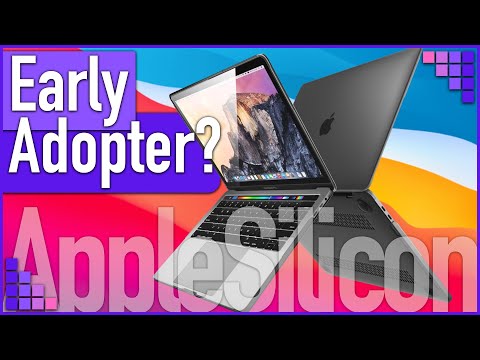When Apple announced the move from IBM PowerPC and their G Series processors to Intel in 2005 Steve Jobs mentioned that OS X had been leading a secret double life, and that every version of OSX for the last 5 years had been coded in parallel for Power PC and Intel chips.
Now we’re on the brink of another huge transition, this time to Apple’s own silicon, and it could be a much bigger deal.
When Steve Jobs took to the stage at WWDC 2005, he said that Apple had great products now, but they didn’t know how to make the great products that they wanted to in future with the PowerPC roadmap. He also said that the performance per watt was an important factor, because of heat and battery life concerns. Sound familiar?
WWDC gave us one of the first glimpses inside Apple’s development labs, and you can be sure that they’ll have been working on what Apple Silicon could do in a notebook or desktop for a long time. While Intel has struggled to make their chips perform better without a lot of heat being given off, Apple’s own SOCs have become more and more powerful year over year.
Catalyst
Native Mac apps built with Mac Catalyst can share code with your iPad apps, and you can add more features just for Mac. In macOS Big Sur, you can create even more powerful versions of your apps and take advantage of every pixel on the screen by running them at native Mac resolution. Apps built with Mac Catalyst can now be fully controlled using just the keyboard, access more iOS frameworks, and take advantage of the all-new look of macOS Big Sur. There’s never been a better time to turn your iPad app into a powerful Mac app.
Even without Catalyst, iOS Apps will be able to run unmodified on an Apple Silicon Mac with Big Sur. The iOS App Store currently has around 2.2million Apps. The Mac App Store has around 28k. Thats a HUGE difference.
Will everything work awesome or be in any way useful on a Mac? No. But there will be a huge amount of great, usable apps that we’ve never seen before
Rosetta 2
Following up from what Apple introduced back in the PowerPC to Intel Transition, Rosetta 2 takes this to the next level. With Rosetta 2, Apple has combined just in time translation at runtime with translation on install, which uses Rosetta’s technology to convert the app’s code when it is installed on the Mac instead of when it is run. In terms of performance, Apple demonstrated Legend of the Tomb Raider running via Rosetta 2 on their Developer Transition Kit at 1080p very smoothly. The Developer Transition Kit for Apple Silicon consists a Mac mini chassis with an iPad Pro’s A12Z Bionic processor, 16GB of Ram and a 512GB SSD inside, though this does not reflect the performance that will be far far better on ready for consumer Macs with Apple Silicon.
Universal 2
Universal 2 is a technology that will allow a single app package to contain the binaries for both Intel and Apple Silicon versions of an app. It keeps all thee assets that can be used across both apps consistent and then uses the specific files that the different platforms need at the time of install to support them correctly. In essence, Universal 2 means that for Apple users, regardless of which platform they’re on, they just download the app from the App Store and behind the scenes the right version is installed.
But Why Switch to Apple Silicon?
One thing that we do know is that Apple Silicon, because it will be based on Apple’s existing A Series chips with their 5nm architecture process and performance is that Apple Silicon Macs will be no slouch.
The current, and by all accounts underpowered compared to anything Apple would sell is already rivalling the I7 processor in MacBook Pros, without the thermal throttling and consuming far less energy. When that Mac mini form factor is switched to a notebook is a massive increase in battery life along with great performance and potential price reduction as Apple isn’t buying a chip someone else has done the research for.
Many have said that Apple would rather keep that extra cash as profit, but I think the trade off of keeping their margins at a similar percentage to what they have now, but being able to reduce the ticket price will massively benefit thee company. For Apple, it makes far more sense for them to offer lower entry points into their range where they can, as more people in the Apple Ecosystem means more revenue for them in the long term from Apple Music, Apple TV+, iCloud, Apple News, Apple Arcade and now, Apple Fitness+ and Apple One.
In terms of battery life, the rumours are talking about 15-20 hours on a single charge. That is amazing, and means you really can work wirelessly all day without worry. Plus, think instant on like an iPad too. No waiting for boot ups.
